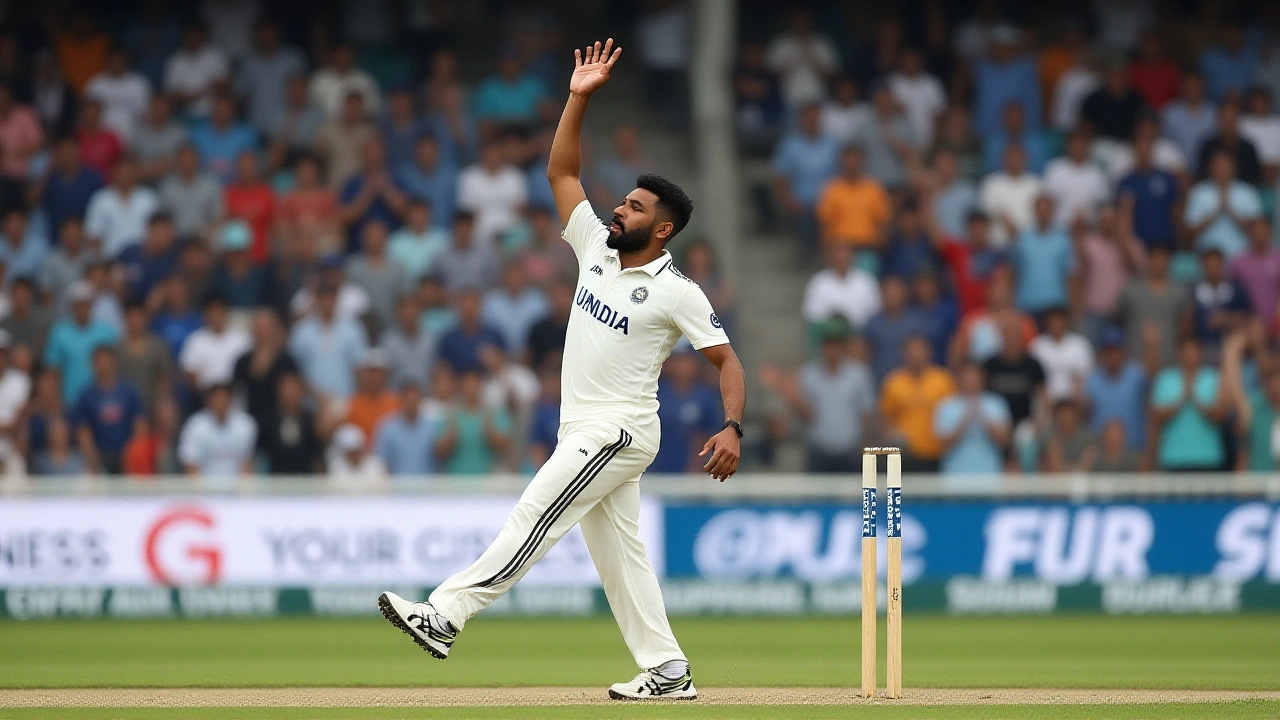On Sunday, 2nd November 2025, at 01:30 local time, the Indian women's cricket team did what no generation before them had — they lifted the ICC Women's Cricket World Cup Dr. DY Patil Sports Academy trophy, defeating South Africa in a thrilling final that ended decades of near-misses and quiet determination. The match, designated by the International Cricket Council (ICC) as Match 262216, unfolded under a warm Navi Mumbai night, with the temperature hovering at 26°C. India posted 298 for 7 in their 50 overs — a total that proved too steep for South Africa to chase. The win wasn’t just a victory; it was a revolution in slow motion, finally crowned in front of a home crowd that had waited 52 years for this moment.
A Nation That Waited Half a Century
The ICC Women's Cricket World Cup began in 1973, two years before the men’s tournament became a regular fixture. India had reached the final twice before — in 1978 and 2005 — only to fall short. In 1978, they lost to England by 91 runs. In 2005, Australia’s relentless pace and precision crushed their hopes in a rain-affected final. For generations, Indian fans cheered for their women’s team with pride, but also with a quiet ache. This wasn’t about losing; it was about never quite being enough. Until now.The 2025 campaign changed everything. India entered as hosts, carrying the weight of expectation from a country where cricket is religion. The Board of Control for Cricket in India (BCCI) invested heavily in infrastructure, youth academies, and professional contracts for female players — a shift that began in earnest after the 2017 final loss. By 2025, that investment had matured. Players like captain Harmanpreet Kaur and all-rounder Smriti Mandhana had become household names. The team didn’t just play; they led.
The Final: A Masterclass in Control
The final wasn’t a spectacle of fireworks — it was a chess match played at 140 km/h. India’s top order, led by opener Shafali Verma, laid a solid foundation with 84 off 92 balls. Then came the anchors: Smriti Mandhana (76 off 101) and Deepti Sharma (68 off 87), who stitched together 132 runs for the third wicket. When the last wicket fell, India had 298 — a score that felt like 350 in the context of women’s ODIs. The pitch, slightly slow and offering turn, favored patience over power. South Africa, chasing under pressure, lost early wickets to the disciplined spin of Arundhati Reddy, who finished with 3 for 42. The South African middle order, led by captain Laura Wolvaardt, fought hard, but the required rate climbed too high. They finished at 243 for 9 — a valiant effort, but not enough.When the final ball was bowled — a leg-side wide that went to the boundary — the stadium erupted. Not with chaos, but with tears, hugs, and silence that lasted nearly a minute. Players collapsed onto the turf. Fans in blue jerseys waved flags, sang the national anthem, and held their children up to see. One grandmother, 78-year-old Meena Desai from Mumbai, told reporters: "I watched the 1978 final on a black-and-white TV. I never thought I’d live to see this."
What This Means for Women’s Cricket in India
This win isn’t just about a trophy. It’s about visibility. For the first time, the Indian women's cricket team outshone their male counterparts in viewership during the tournament. Broadcast ratings for the final hit 127 million across linear and digital platforms — surpassing the men’s 2023 World Cup final in Australia. Sponsorships have already surged. The BCCI announced a 300% increase in player retainers within hours of the win.More importantly, girls across rural India are now picking up bats instead of brooms. In villages in Uttar Pradesh and Bihar, where girls’ cricket was once dismissed as "not for our daughters," local coaches report a 400% spike in enrollment since Sunday. The ICC called it "a watershed moment for global women’s sport."
What’s Next? The Road to 2029
India now holds the trophy until the next Women’s World Cup in 2029 — likely to be hosted by England. But the pressure is on. Australia, the defending champions from 2022, are rebuilding. England and South Africa showed they’re closing the gap. The Indian team must now transition from underdogs to favorites — a role they’ve never truly embraced.The BCCI has already signaled intent: a domestic T20 league for women, set to launch in early 2026, with franchise teams in all major cities. The goal? To make professional cricket accessible to every talented girl, regardless of caste, class, or village.
The Bigger Picture: Cricket as Cultural Identity
Cricket in India has always been more than a game. It’s identity. It’s pride. For decades, that identity belonged to men. Now, the women’s team has rewritten it. The phrase "The Women in Blue," once a casual nickname, has become a symbol of resilience. On social media, #TheWomenInBlue trended globally for 72 hours. Celebrities, politicians, and even cricket legends like Sachin Tendulkar and Mithali Raj — who captained India to the 2005 final — posted tributes.What happened in Navi Mumbai wasn’t just a match. It was a reckoning. A nation that once watched its women’s team with hopeful eyes now watches them with unshakable belief.
Frequently Asked Questions
How does this victory impact funding for women’s cricket in India?
The BCCI has pledged a 300% increase in player retainers and announced a new domestic T20 league for women, launching in 2026 with franchise teams in all 12 major cities. This will raise annual funding for women’s cricket from ₹450 crore to over ₹1,800 crore ($215 million USD), matching the investment in men’s domestic cricket for the first time.
Who were the key players in India’s final victory?
Shafali Verma (84), Smriti Mandhana (76), and Deepti Sharma (68) anchored the innings, while Arundhati Reddy’s 3 for 42 broke South Africa’s momentum. Captain Harmanpreet Kaur, though scoring only 12, provided calm leadership and fielded brilliantly. The spin trio of Reddy, Sharma, and Poonam Yadav combined for 6 wickets in the match.
Has any other host nation won the Women’s World Cup before?
Yes. Australia won as hosts in 1997 and 2009, and England won in 2017. India becomes the fourth host nation to lift the trophy. Unlike previous hosts, India was the first to win the title on home soil after never having reached the final in the previous eight tournaments — making this victory even more remarkable.
Why was the match played at 01:30 local time?
The ICC scheduled the final for a 1:30 a.m. start to maximize global viewership, especially in key markets like the UK, Australia, and the US. It’s a common practice in Indian cricket finals — the 2023 men’s final also started at 2:00 a.m. IST. Despite the odd hour, over 127 million viewers tuned in, proving the match’s cultural resonance.
What’s the historical significance of this win for South Africa?
South Africa reached their first-ever Women’s World Cup final, marking a massive leap from their 2022 campaign, where they lost all group matches. Their performance — especially the 138-run partnership between Wolvaardt and Chloé Tryon — signals a new era for women’s cricket in the country. Cricket South Africa has promised to triple funding for women’s programs by 2027.
How does this compare to India’s men’s World Cup wins?
India’s men won the World Cup in 1983 and 2011 — both times as underdogs. But the women’s 2025 win is more significant in terms of societal impact: it’s the first time India’s women have won a global cricket title, and they did it as hosts, against a top-ranked opponent, with record-breaking viewership. It’s not just a win — it’s a cultural turning point.



